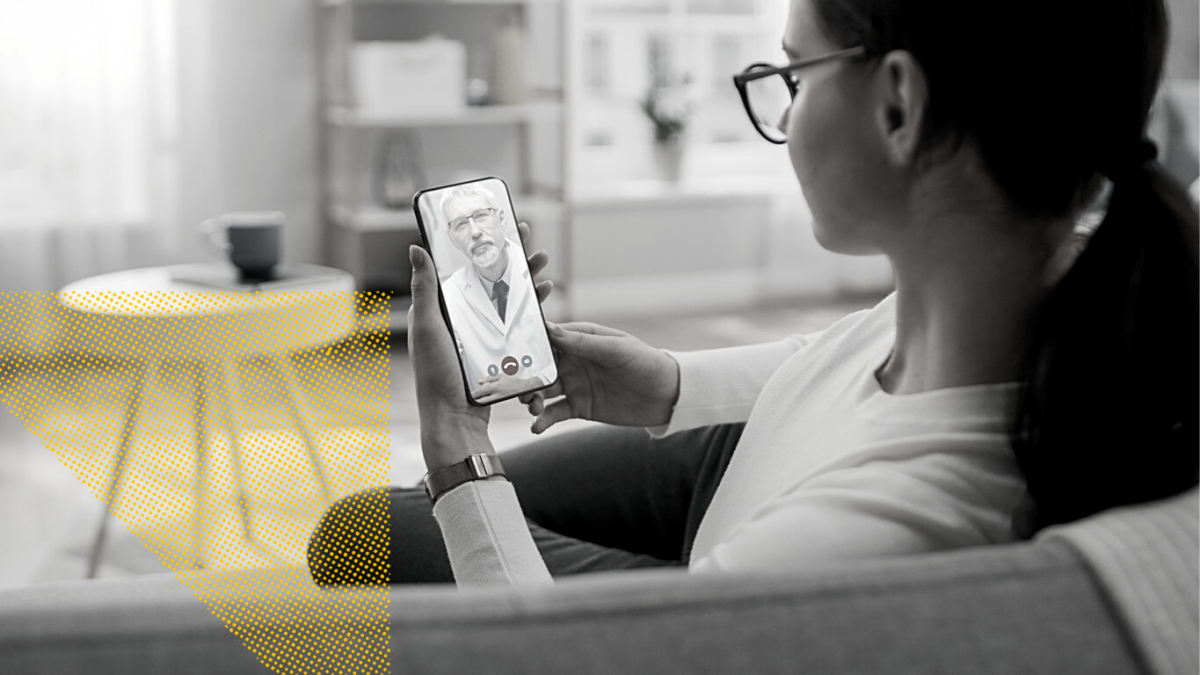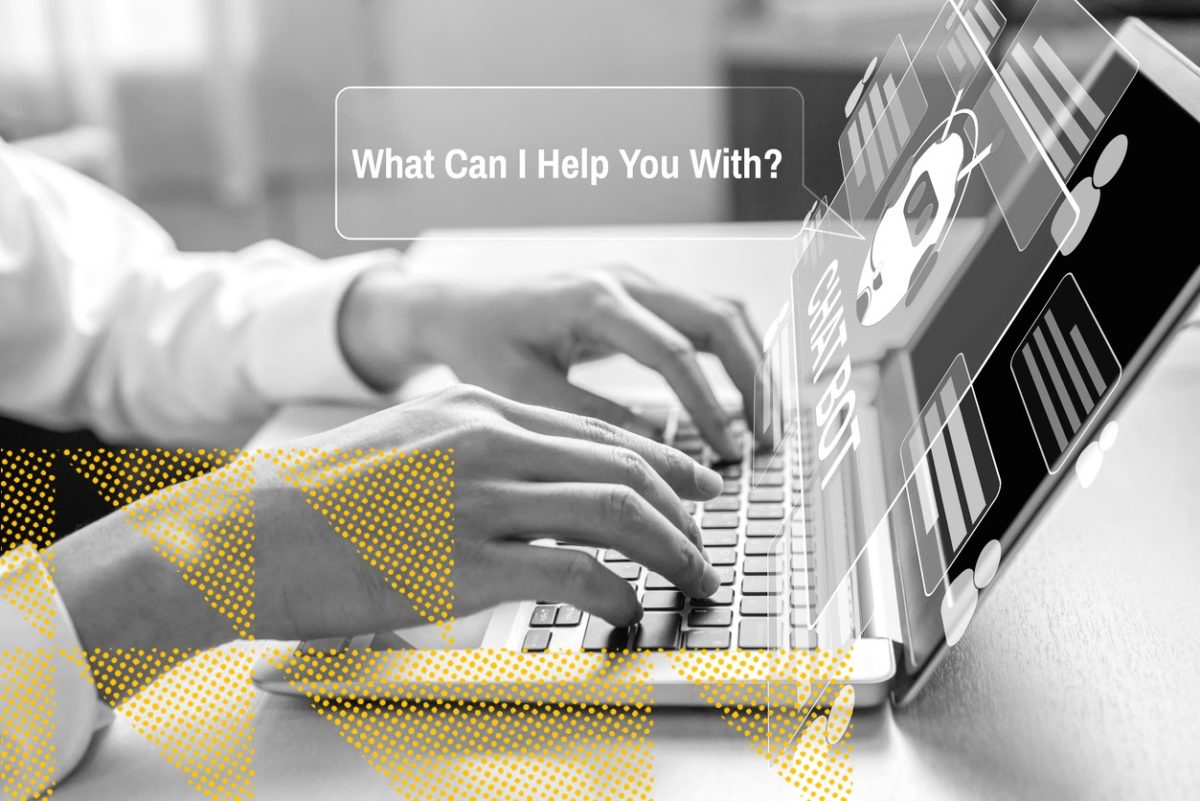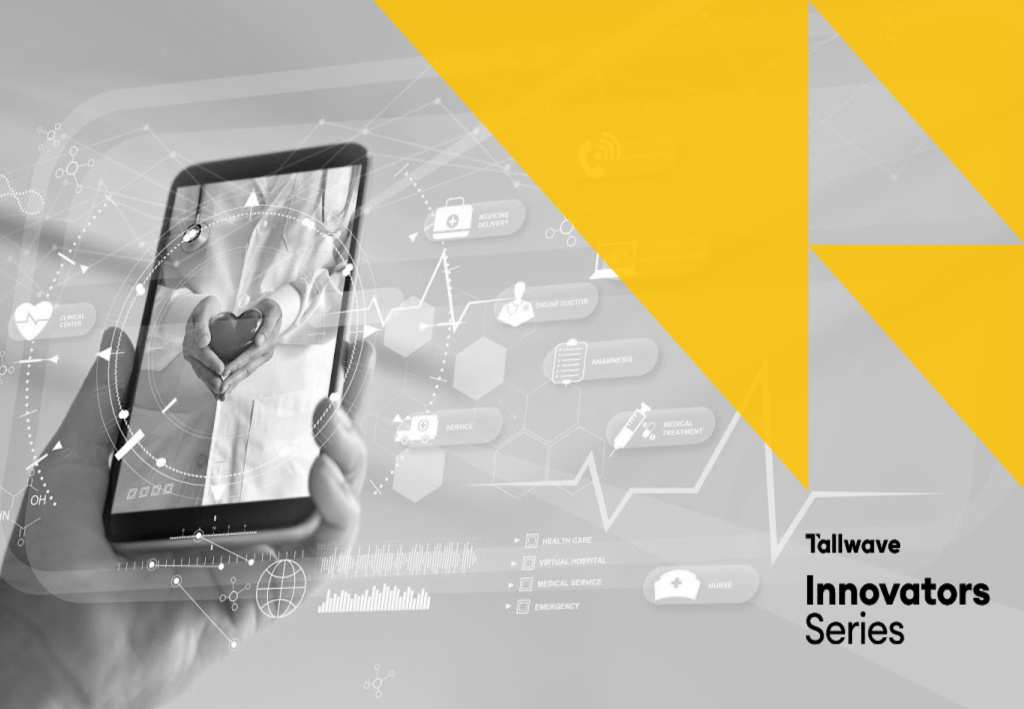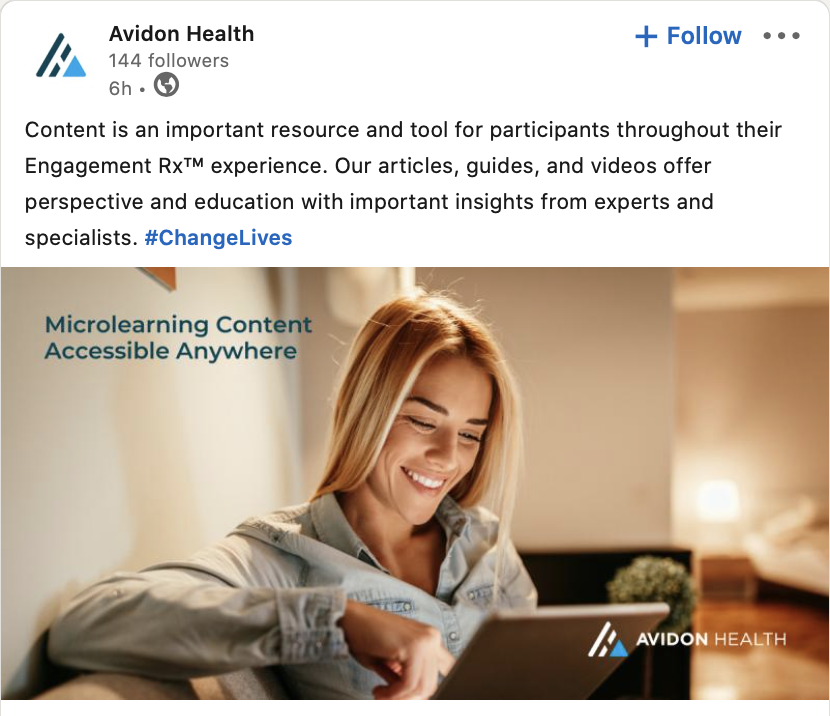As soon as COVID-19 hit, healthcare systems and organizations across the world scrambled to craft new strategies to serve their communities whilst keeping employees and patients safe. But despite their efforts, there was often one barrier that often prevented patients from seeking care in times of need: Trust. Trust that they’d be protected from contracting COVID-19, should they visit a hospital in-person.
In the latest episode of Tallwave’s Innovator Series, our Vice President of Marketing Jessica Pumo talks to Patrick Knauer, the Director of Digital Marketing for Banner Health’s Ambulatory practices, about developing and implementing digital marketing strategies to give patients peace of mind, as well as what he believes is in store for the future of healthcare, the patient experience, and digital marketing as a whole.
Innovators Q&A With Patrick Knauer
Jessica Pumo: Hello everyone. I’m Jessica Pumo, Vice president of Marketing at Tallwave, a customer experience design company. Welcome to the latest installment of our Innovators Series. Today, I am thrilled to be joined by Patrick Knauer, Director of Digital Marketing for Banner Health Ambulatory Services. Welcome, Patrick.
PK: Hi Jessica. Thank you. It’s great to be here.
JP: Now, at a high level, Patrick, you work with Banner Health’s ambulatory service lines to align marketing strategies to business direction, and then you work with the broader marketing and media teams to execute marketing campaigns. So, I know you’ve got great perspective to share.
To kick things off today, I’d just like to start by hearing a bit about your professional journey. What initially attracted you, like so many of us, to digital marketing, and how did you get to where you are today?
PK: Yeah, I started off in digital marketing, working for a search engine optimization company, not knowing how much I would love it, but it really became my passion just because it changed it. It felt like every two weeks Google would reset the landscape and we would always [have to] adjust and have to rethink our approach.
That sense of excitement really stuck with me as I grew and it’s still that way. I’ve been in digital marketing for over 15 years now and it does feel like every two weeks there is a new tweak to keep you on your toes. So, that excitement hasn’t faded.
JP: So, let’s get a little more specific about how your role contributes to Banner’s larger mission. How is success defined for you and your team and how does that help Banner reach its established business goals?
PK: Yeah, so, Banner is working to meet consumers where they need healthcare, and that’s in an ambulatory setting. My role and the teams that I work with, are working to make sure that we’re easily accessible. That we’re easy to find through digital channels and that when our consumers need care, it’s not troublesome or burdensome to schedule to get into a healthcare clinic and to get out.
So, we have a lot of communication that we need to do, and we have a lot of marketing that we need to do to make sure that we’re omnipresent on various digital platforms that consumers use today.
There was a fear about being inside small spaces and healthcare locations. People were more hesitant to just walk in. They wanted to use their digital tools to limit their time, to limit their exposure, and [to] make that appointment on the computer.
JP: Wonderful. As, as we narrow our focus a little bit, I think I’d be remiss if I didn’t start with something that I know has changed the landscape for all of us. And it must be an understatement to say that the pandemic has changed the healthcare landscape.
So, given that the pandemic has driven a lot of changes to how consumers find and engage with businesses of all kinds, what kinds of changes have you all seen in terms of how consumers search for and engage with ambulatory services?
PK: One of the best examples that I could give you would be just our online appointment rate for our Urgent Cares, which is of our ambulatory service lines. We see the most volume out of our Urgent Cares. We have over 50 locations in Northern Colorado, [and] Arizona, so a lot of different points of access.
And, what we noticed from the beginning of the pandemic to its peak, was that our online bookings rose by 37% [percent] all the way up to 50% [percent]. So, about half of the patients coming through the doors were scheduling online. And the reason we saw that increase was because there was a fear about being inside small spaces and healthcare locations. People were more hesitant to just walk in. They wanted to use their digital tools to limit their time, to limit their exposure, and [to] make that appointment on the computer.
JP: Since you’ve mentioned it, I would love to jump to that idea: How concerns around personal health and safety have changed with the pandemic.
I know that’s really put those concerns front and center and the need to build trust with consumers has never been more important than it has been just these last several months. This need must have been even more acute when it comes to ambulatory services.
So, I’m curious what data points have you used to help understand patient needs and patient pain points as they’ve evolved through the course of the pandemic?
PK: Our analytics demonstrated that, prior to COVID, the most popular action that we would see consumers takes were clicks over to our website where they could access more information on the location or the services that were there.
But during the pandemic clicks to the website went down and direct phone calls to our clinics went up… We extrapolated from that there was more information that they needed directly from a person: To hear what steps were being taken or specific situations – if you’re at high risk for COVID or you have an auto-immune disease, or you’re in a certain age bracket – you might need reassurance of talking to someone at the front desk, and asking questions [such as], “Can I be seen?”, “What special requirements or services do you have for me?”
That was one data point that we really noticed, and it helped to kind of informed the communication that we put out there to our consumers because we were able to take those data points out of the conversations and understand, what are the concerns? How do we address them [and make] them easy to find, and put them in front of our consumers so that they already know the answers to some of their questions?
Also read: Data Driven Insights Into the Evolving Customer Experience
There’s a myriad of different digital transformations that are happening, but most of them are revolving around improving the ease and the experience.
JP: It’s really fascinating to hear how you’re looking at those digital signals and interpreting them as indicators of how that experience needs to change, knowing that the experience inevitably – in an ambulatory setting – is going from online to in-person. How has Banner worked to build patient trust through marketing and messaging from what they experienced in local search to what they experienced when they arrive in-person at an ambulatory services center to inspire and build that confidence and trust and drive continuity in that experience?
PK: That was the main challenge with COVID. And the main objective was to really make sure people understood the efforts that, as an organization, Banner Health was taking to make care safe.
So, we created a safe place for care, a logo, and a brand campaign… [We put that logo] on communications, whether it be a top of the funnel advertisement or bottom of the funnel, actually inside the clinic. We had the steps we took to clean a clinic, that we ask our patients to [wear a] mask, and the other steps that we take for our own employees to make sure everyone [is] safe. And we put those pieces of communication on our website, on our blog, within our emails – all over the possible digital touchpoints, so that no matter where the consumer interacted with Banner, the logo was there and the information was there. And if they needed a deeper dive, we provided the URL where they could go and read exactly the steps that we were taking behind the Safe Place For Care campaign.
JP: When you look at any one of those individual touch points, the changes that you’re describing may seem really nuanced, but when you look at them in [the] aggregate, that really is some significant changes to the patient experience.
PK: It really was. And it was a lot of work to spread that kind of communication across 400 plus clinics, [through] email, blog, or website advertisement. But that was our mission. That was our objective. I was proud to be a part of the team, and the outcomes were great because we had a lot of people tell us that they felt safe, and they appreciated the efforts that we took.
JP: Which is so important. So important. Well, let’s move from innovation to transformation here for just a second. Something that’s top of mind for me and for the Tallwave team, based on our recent Tallwave research report, is telehealth as a prime example of the digital transformation underway in the healthcare space. What does digital transformation in healthcare look like for you and your team?
PK: It looks like a lot of things. That’s a difficult question to unpack because it could be an app on the phone that has a host of capabilities – from communicating with your provider to accessing lab reports, to making an appointment. And that’s just within an app. But there’s also other touch points out there, on the web on a mobile web, where you need to have other capabilities like online scheduling.
One of our most popular digital transformation features is our symptom checker, which is really easy to use. You can just pop onto BannerHealth.com, open up the symptom checker app, tell our computer exactly what you’re experiencing: What you’re feeling, [and] what your symptoms are. And after a series of questions and answers, you get a mini-diagnosis, and it’ll point you to the right level of care, which is important in healthcare, because you don’t want to go to the emergency room when an urgent care visit is perfectly appropriate.
There’s a myriad of different digital transformations that are happening, but most of them are revolving around improving the ease and the experience, overall, that you have interacting with healthcare.
JP: I know we’ve talked about some of the complexities of managing that experience within the pandemic, but I certainly don’t want to lose sight of how complex that is for you and your team, just on a day-to-day basis.
In general, outside of the pandemic, I know Banner has leveraged a really diverse constellation of digital touch points to address patient needs and pain points by meeting them where they are, when they’re there. And I know that really does cut across a lot of different teams at Banner. So, how do you set the stage for smooth handoff, from your team to the next, so that that patient experience feels really seamless as they move through multiple points of engagement from the Banner websites to social, to email, to Google My Business, and everything in between?
PK: Yeah, that’s one of the core responsibilities of my role. As the Director of Marketing for our ambulatory service lines, I need to understand the objectives of one of our business units, like Urgent Care or the medical group, and come forward with a marketing plan that meets the goals that they’re trying to accomplish.
Then, I put that together into what we call a marketing playbook, which lists out: What are we trying to accomplish? What are our goals? What are we going to use as our call to action? What are our proof points, or what we like to call “reasons to believe” in Banner Health or Banner Urgent Care or Banner Medical Group. [I] put that into a centralized tool, which we use work from, and pull all of the various teams together and have kickoff calls, and installation meetings, and go over all of this planning [around] the direction, and everything that we are going to use so that everyone understands: “Let’s use these calls to action. Let’s use these reasons to believe. Here are blog resources. Here are website resources.”
And then, whenever it’s time to actually execute, the teams can go into [that] work, [and] know that they can pull the information [and] that will be the same information that the web team is pulling, or the email team is pulling, and the advertising team is pulling. So, everything is the same across the board, and you have that nice, beautiful experience that’s consistent.
We know that the level of trust that we encounter through Google My Business and organic search is higher just based upon the way our consumers convert and make those appointments – but paid search is a very high converting platform in itself.
JP: I think you you’ve touched on some things that really are very actionable for all of us. I think there are very few marketers out there who are not working hand-in-hand with other marketers who may be on different teams, different departments, different divisions, but the idea of starting with a really clear unifying strategy in enrolling everyone into that strategy together, so that you’re all on the same page, and then offering up the tools and resources that everyone needs to do the job. I know it sounds simple. It’s hard to execute and certainly worth bearing in mind. So, thanks for calling those things out.
As a marketer who manages a combination of paid search and organic search, which are needs supported by different teams in my world, it’s not lost on me how challenging it can be to marry those things. That really should be two parts of a whole. So, I’m curious, Patrick, how do you think about organic versus paid search as it relates to the patient experience, and how do you coordinate your efforts on the organic front with those of your partners managing the paid activity so that those things work together?
PK: I think they’re both extremely valuable and, in my mind, there’s not a difference between the two. There’s performance differences – we know that the level of trust that we encounter through Google My Business and organic search is higher just based upon the way our consumers convert and make those appointments – but paid search is a very high converting platform in itself.
The thing that we want to do is make sure, again, that our messaging is consistent, that we’re using the same reasons to believe, because we know from analysis of how long it takes some to convert, that there might be multiple touch points along the way. Paid search might be two of three touch points. So, we want to make sure that the messaging, the reasons to believe are consistent no matter where they interact with us. But from a strategic level, they’re both lower funnel for us. And they’re both of high importance,
JP: [It] all kind of goes back to recognizing that those things have to be seamless in the customer experience. Right? So, how do you see local search within the ambulatory services space changing and how is your team adapting?
PK: So, yeah, I think that’s an interesting question. Real estate in Google is shrinking, and Google is owning more of the first page for its own products, like Google My Business, for zero click information. I think that that’s going to continue. I think paid search is going to stay rather consistent with the results that you see on the page and the real estate that it’s given, but zero click information and Google My Business, in my mind, has more of a future because the big change in healthcare would be if you can make an appointment to get into your doctor or to an Urgent Care clinic directly from Google, [without ever] having to click over to Banner Health or any other health system, that would be a zero click conversion.
Google is working towards that in many industries, including healthcare. And it’s probably not going to be a 2021 solution that you see, but it’s not too far down the road. And being able to provide our consumers with as much information, and as much access as they can out of local search is an extremely strategic focal point for us at Banner Health, and one that we’re keeping a close eye on.
So, we’re very active within our local search tools, [and] with our listings. We want to make sure that we’re providing everything that we can, and the information in there is as up-to-date as possible. So, we solicit reviews. We post new information. We provide videos. We provide images. And that continual effort to work the local search has paid very good dividends for Banner Health.
Also read: 9 Metrics That Help Measure Customer Engagement
Being able to provide our consumers with as much information, and as much access as they can out of local search is an extremely strategic focal point for us.
JP: I think that’s a well-informed look at what may lie ahead. When it comes to that local search space, what other changes are on the horizon for you and your team in a post-pandemic world?
PK: That is yet to be known. Right now, we’re kind of letting the data tell us what to do. Our research team is constantly bringing us new information on the consumer perspective [within a] COVID and a post-COVID world. And, right now, we’re continuing our messaging of safety and a Safe Place For Care, but we realize that that may not last forever, and that we need to plan for the future.
I think what we want to do is make sure that, no matter where you are on the spectrum of COVID-concern, whether you feel very comfortable without a mask and you’d like to go about your life like it’s 2019, great! Or if you are forever changed, and you need to know that there are certain safety protocols for you wherever you go, great, we also want to make that person feel very comfortable.
So, planning for those two different consumer types is something that is existing at Banner Health, as well as understanding the nature of the changing landscape of healthcare with the digital space, and how those two things can work together to be each other’s benefit.
JP: Such an interesting road ahead, no doubt, regardless of how that crystal ball changes over time. But you’ve been very generous with your time today, Patrick, thank you again for joining us, and for the great conversation.
PK: Oh, thank you so much, Jessica. I enjoyed it.
If you’d like to learn more about Banner Health, you can visit BannerHealth.com or follow them on Facebook, Twitter, and YouTube, all at Banner Health.
If you’re interested in learning more about Tallwave and how we help companies design exceptional customer experiences, contact us today. You can also read and download our recent research report, “Data-Driven Insights Into the Evolving Customer Experience” here.






